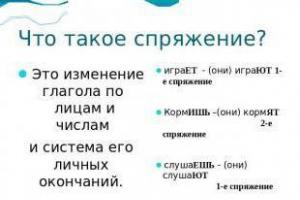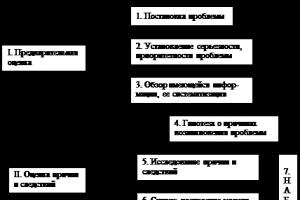Destructiveness is a term that is derived from the Latin word destructio, which in translation means destruction, disruption of the normal structure of something. In psychology, this term denotes a person’s negative attitude, which he directs towards certain external objects (outside), or, alternatively, towards himself (inside), as well as behavior that corresponds to these views.
Destructiveness: general
Dr. Sigmund Freud believed that destructiveness is a common characteristic of absolutely every person, and believed that the only difference lies in what this phenomenon is aimed at. Eric Fromm, in his work “The Anatomy of Human Destructiveness,” is confident that destructiveness directed outward is only a reflection of what is directed inward, and thus it turns out that if a person’s destructiveness is not directed at himself, then it cannot come from others.
Human destructiveness is a consequence of the fact that a person simply blocks the output of fruitful energy, seeing various obstacles on his path of development and self-expression. It is precisely because of failure in the complex matter of self-realization that this pathological phenomenon arises. Interestingly, the person remains unhappy even after achieving goals.
Destructiveness and its direction
As mentioned above, destructiveness can be directed outward and inward. Let's look at examples of both types.
The following facts can be considered manifestations of destructive behavior directed outward:
- destruction of another person (murder), destruction of his personality;
- destruction of society, certain social relations (war, terrorist attack);
- destruction of valuable objects, such as monuments and works of art (vandalism);
- destruction of the natural environment (ecological terrorism, ecocide).
The negative consequences in this case will primarily affect the external object, and not the person himself.
Manifestations of destructive behavior directed inward, or self-destruction, include:
- any abuse of mentally active substances (substance abuse, alcoholism, drug addiction);
- suicide (deliberate physical killing of oneself and self-destruction of the individual);
- pathological non-chemical addiction: Internet addiction, gambling (passion for gambling), etc.
There can be many manifestations and they all cause some harm, some more, some less.
Destructiveness and destructive behavior
Destructive behavior is a type of behavior destructive to a person, which is characterized by significant deviations from existing psychological and even medical norms, as a result of which a person’s quality of life suffers greatly. The individual ceases to critically review and evaluate his behavior, a misunderstanding of what is happening and a cognitive distortion of perception in general arises. As a result, self-esteem decreases, various kinds of emotional disturbances arise, which  leads to social maladaptation, and in the most extreme forms.
leads to social maladaptation, and in the most extreme forms.
Destructiveness itself is present in absolutely every person, but it manifests itself only in complex, difficult, perhaps turning points in life. This often happens to teenagers, for whom, in addition to the problems of their age-related mental health, they also have an academic load and difficult relationships with the older generation.
In some cases, destructive personality changes are also possible, which consist in the destruction of the personality structure itself or, alternatively, some of its individual components. There are a variety of forms of this phenomenon: deformation of motives of behavior, deformation of needs, changes in character and temperament, violations of volitional control of behavior, inadequate self-esteem and problems in communicating with others.
Modern psychological, legal, and sociological research designates socially disapproved, condemned forms of personal activity through the term destructive behavior. Destructive behavior is considered as a form of personal activity aimed at destroying functioning social structures. This activity can be purposeful or be a psychological reaction to any personal or social construct.
Features of destructive behavior
Destructive behavior is based on the value, characterological, regulatory and motivational-semantic spheres of the individual. Destruction in relation to others is at the same time a way of designating, discovering one’s own structure, which can be identical to other representatives of society or fundamentally different from them.
Definition 1
Destructive behavior, therefore, is a form of personal behavior aimed at destroying external structures while simultaneously modeling one’s own behavioral patterns; a maladaptive-directed process of interaction between a subject and the surrounding social and natural environment, mediated by individual characteristics of a person, in the form of reactions or actions.
An act presupposes a purposeful, conscious form of activity, while a reaction is characterized by impulsiveness and thoughtlessness.
The destructive nature of personality activity is manifested in psychological states, situational reactions that deviate from the norm, as well as in the form of personality development, leading to maladjustment in society. In other words, destructiveness is a negative attitude of an individual towards himself and others.
A certain amount of destructiveness is characteristic of all people; the main differences lie in the choice of the object at which it is directed: at one’s internal state or at the surrounding socio-natural environment.
Goals of destructive behavior
The goals of destruction aimed at the external environment may be the following:
- physical destruction of another (individual or mass);
- destruction of the system of social relations or society as a whole: terrorist attacks, coups d'état, revolutions, etc.;
- destruction of inanimate objects, works of art (vandalism), as well as the natural environment.
Forms of destructive behavior
Destructive activity of the individual can take various forms of its manifestation. The following forms of destruction are distinguished:
- illegal behavior caused by motivated or unmotivated violations (non-compliance) of legal norms established in society;
- administrative and managerial destructive behavior associated with direct non-compliance, non-compliance with social norms, with exceeding one’s own rights and powers;
- individual-targeted, characterized by an extremely egoistic character, aimed at realizing personal interests to the detriment of collective and social ones;
- group forms of destruction aimed at causing damage to society;
- types of individual or collective behavior aimed at forcibly preserving outdated, conservative forms of social interaction, which leads to blocking the processes of development of initiative, creative potential of the individual and society;
- imitative behavior that camouflages true interests,
Important! Destructive human behavior lies between the norm and social pathology.
Destructive behavior pattern
Destructive behavior, like behavior in general, consists of many components and is reflected at all levels of human life. In psychology, behavior itself is presented in the form of an active stimulus-response connection and is divided into the following components:
- external activity (movements, actions, statements);
- internal activity (motivation, goal setting, cognitive processing, emotional response).
Important! Internal activity will always find a way out. Destructive thoughts one way or another are embodied in destructive actions.
The destructive model of behavior has a number of features:
- causes a negative, negative assessment from most people;
- does not conform to social norms;
- causes damage both to the individual and to those around him;
- acts as a response to a non-standard situation;
- associated with a negative personality orientation;
- develops as a result of lack of social adaptation;
- has its own individual characteristics.
The basis of the destructive behavior model is:
- lack of motivation;
- inadequacy;
- maladaptation;
- autism;
- lack of effectiveness.
Destructive behavior
Any human behavior is realized in society and is of a social nature and is always associated with speech, action and goal setting. Destructive behavior reflects a low degree of socialization of the individual, avoidance of society, and poor adaptation to internal and external conditions.
Important! The degree of adaptation largely determines the behavior of an individual.
Often, destructive behavior is demonstrated by people who do not have a developed sense of responsibility, who do not know how to make independent decisions and choices. At the individual level, such individuals are more likely to choose the path of abnormal behavior. They can display their destructive behavior in relation to the following social principles:
- Spiritual and moral standards s (universal human values).
- Moral and ethical standards(rules not written down on paper).
- Legal standards(rules enshrined in legal acts).
- Organizational and professional standards(instructions).
- Individual norms(individual rights in society, personal orientation towards certain attitudes and needs).
Any model of behavior is laid down and formed in childhood. At the age of 4-5 years, a child learns information that will determine his relationships with others. A full-fledged family, whose members show care and attention to each other, has a beneficial effect on the formation of the child’s psyche and lays constructive behavioral foundations. Thus, people who have not received competent education, love and warmth are at risk.
Important! Children often adopt the destructive behavior patterns of their parents.
Scientists have concluded that destructive behavior develops successfully against the background of the following factors:
- the presence of massive social deviations (alcoholism, crime, bureaucracy);
- situational deviations (the presence of speculation, marriages of convenience, etc.);
- weakening measures of social influence (reducing the level of condemnation, criticism from outside);
- liberalization of measures to combat destructive behavior (absence of fines and punishments for offenses and deviations).
Types of destructive behavior
Classification of destructive behavior is difficult, since specialists have to work with a floating value - the norm. It is subject to change, and what is considered acceptable today will be beyond the scope of adequate behavior tomorrow, and vice versa. Basically, psychologists divide destructive behavior into two large groups:
- delinquent behavior(exceeding the legal framework, violation of the law);
- deviant behavior(inconsistency with generally accepted standards of morality and morality).
Since the first third of the 20th century, many scientists, psychologists and sociologists have been thinking about what kind of behavior can be placed within the framework of deviations and destructive behavior, and whether such behavior always carries exclusively negative consequences. Many classifications have been developed. Here is a table showing different approaches to understanding destructive behavior.
| date | Scientist | Classification | The essence |
| 1938 | R. K. Merton | Subordination | Acceptance of public goals and means of achieving them |
| Innovation | Acceptance of social goals, but not the means to achieve them | ||
| Ritualism | Denial of a goal due to the inability to achieve it, but maintaining the desire to achieve it | ||
| Retreatism | Leaving society due to disagreement with its goals and means of achieving them | ||
| Mutiny | An attempt to change social goals and means of achieving them | ||
| 1981 | V. V. Kovalev | Deviations of a socio-psychological nature | — violation of discipline; — violation of social norms; — violation of legal norms; - demonstration of self-destruction. |
| Deviations of a pathological nature | - pathological; - non-pathological. |
||
| Personal-dynamic deviations | - reaction; - development; - state. |
||
| 1987 | F. Pataki | Predeviant syndrome(prerequisites for deviant behavior) | — affective type of behavior; - conflicts in the family; — aggressive actions; - desire for antisocial behavior in childhood; — intolerance to the educational process; - low level of intellectual development. |
| Basics of deviant behavior(stable forms) | - crime, - alcohol addiction, - drug addiction, - suicide. |
||
| 1990 | Ts.P.Korolenko | Non-standard actions | Motivated destructive behavior that go beyond generally accepted norms. |
| Destructive behavior | — behavior aimed at violating social attitudes; - escape from reality with the help of psychotropic substances; — violation of rights and laws; - self-destruction (conformism, narcissism, fanaticism, autism, suicide). |
||
| 1995 | V. N. Ivanov | Pre-criminogenic behavior | Ignoring the rules of behavior in public places, minor offenses, drug use. |
| Criminal behavior | Criminal offenses | ||
| 2001 | Yu.A. Clayburgh | Negative behavior | Self-destruction |
| Positive behavior | Creation | ||
| Neutral behavior | Begging | ||
| 2004 | E.V.Zmanovskaya | Antisocial behavior | Violation of legal norms, laws, criminal liability. |
| Antisocial behavior | Violation of ethical standards leading to difficulties in interpersonal communication. | ||
| Self-destructive behavior | Behavior in one way or another entails harm to oneself. | ||
| 2010 | N. V. Maysak | Deviations by nature of behavior | — constructive behavior (creativity); — self-destructive (addictions and suicidal tendencies); — externally destructive (legal violations, communication deviations). |
| Deviations by level of acceptance by society | - approved (adaptation to the group); — demonstration of neutrality (ambiguity in assessing behavior); — disapproved (deviation from ethical and legal norms). |
Destructive Behaviors
Abnormal behavior can take various forms in the context of relationships with society and adaptation to it:
- Radical adaptation(an attempt to change a world that does not suit a person).
- Hyperadaptation(setting unattainable goals).
- Conformist adaptation(adjustment to generally accepted norms with which the individual does not agree).
- Deviant adaptation (motivated destructive behavior, going beyond the norm).
- Socio-psychological maladjustment(open denial of the need to adapt to society, making efforts to avoid this).
Also, destructive behavior can be expressed in the form of the following symptoms:
- aggressive behavior towards people;
- hostility in communication;
- tendency to destroy things;
- desire to upset the way of life of loved ones;
- lack of ability to experience emotions;
- threat to someone else's and one's own life.
Destructive behavior in conflict
A conflict is an open clash of interests of individuals or even groups of individuals. Psychologists do not call for avoiding conflict situations, but, on the contrary, advise learning to manage their course. In this case, the conflict acquires the status of confrontation, the goal of which is to constructively resolve the situation and reach a consensus for all conflicting parties. Destructive behavior in this case lies in the inability to adequately conduct confrontation. Thus, we have the following conflict strategies:
- Constructive. A person strives to resolve a controversial situation peacefully, offering working solutions that would satisfy both parties.
- Destructive. The lack of skills in conducting confrontation consists of deliberately exacerbating the conflict, shifting to the opponent’s personality, inability to listen, and excessive emotionality. The deviant provokes the opponent into aggression and worsening the problem.
- Conformist. Separately, it is worth noting this type of inadequate and partly destructive conflict management strategy. In this case, the person easily obeys the opponent, tries to avoid an unpleasant argument and end it faster, agreeing with everything that is told to him.
Socially destructive behavior
Socially destructive behavior is associated with social maladaptation - a lack of understanding of the rules by which human society exists and functions. The man who demonstrates destructive and antisocial behavior, unable to find themselves in society. Thus, the destructive nature of his behavior only intensifies. Socially destructive patterns of his behavior can be expressed as follows:
- Social and personal discredit. Undermining the reputation or authority of an individual. Tendency to criticize and condemn. Openly offensive and disrespectful behavior.
- Competition. Destructive behavior can be caused by fear for one’s position in a team, which leads a person to attempts to assert himself through other members of this team.
- Avoiding sincere communication. A person exhibiting destructive behavior patterns avoids open communication. It is unlikely that he will be able to adequately answer the direct question “why are you behaving this way?”
Prevention of destructive behavior
The work to prevent destructive behavior must begin with the family and school education. It is at this age that children need to lay down those ideals that will become guides for them in the world of adults.
Important! The main difficulty that parents and teachers face is that children with destructive patterns consider their behavior to be the norm.
Psychologists working with children give several tips that will help grow a full-fledged personality that fits into the social framework:
- Understand your child. The first thing a parent and teacher needs to do is understand why the child acts this way, why he demonstrates destructive behavior.
- Create a balance at the level of need-can-want. In order to instill in a child useful habits (from reading books to going to school every day), it is necessary to maintain a proportion between the child’s need, opportunity and desire to do this. Taking into account these parameters and explaining to him why he needs to do this and not otherwise, you can ensure that the child stops automatically following the norms and acquires motivation to fulfill them.
- Activate your teenager's personal resources. Help your child realize himself in different areas of activity. Experiment, make sure he finds something he likes. This will have a beneficial effect on the processes of his social adaptation.
- Solve the problem of growing up. Infantile personality disorder often becomes a risk factor for the emergence of self-destructive behavior. Help your child gradually become an adult. Create conditions for him to have a painless transition into the world of responsibility and independent decision-making.
- Show less aggression. Try to be more tolerant of your child’s mistakes. Instead of scolding him, explain where he made a mistake and show him by personal example how he should have done it.
- Use a body-centered approach. Psychologists advise learning to work with your body, understand it, differentiate emotions and their localization in the body. This will help the child in the process of self-identification and teach him to understand himself and others.
Is a sense of duty a constructive or destructive feeling for an individual?
Destructive behavior is an interdisciplinary subject of study in many humanities sciences. Interest in it remains throughout the development of psychology and has been increasing in the last decade, which is confirmed by the increase in the number of publications on this issue. At the same time, in the study of destructive behavior, some important issues remain unresolved: a unified psychological doctrine of destructive behavior has not been developed; theoretical approaches to the essence of destructive behavior and the style of its implementation require specifics.
The category of destructive behavior in psychological science is not new. The founder of destruction as the main term for understanding fundamental ontology is M. Heidegger. To reveal the essence of this term, the author defines the signs of destructiveness, these include openness of existence, personal self-identification, representation of human existence in front of “nothing,” a predisposition to the degradation of human existence, assimilation into “being with others.” To this day, the topic of the multidimensionality of destructive behavior remains controversial. Thus, in the first half of the twentieth century, biologists collected a lot of empirical material proving an innate tendency to destructiveness. But it should be noted that the analysis of destruction by the humanities helps to state the fact about the social nature of the category of destructive behavior, formed as a result of the formation of personality.
This statement is based on the premises of the historical and cultural theory of L.S. Vygotsky, who argue that in the course of personal development it is necessary to distinguish between biological formation (which is the fertile ground for human development) and cultural development (which appears in the process of establishing social relations). Followers of L.S. Vygotsky also studied the formation of specific personality characteristics under the influence of the external environment (S.L. Rubinshtein, A.N. Leontyev, V.N. Myasishchev), which led to the conclusion that destructive behavior arises under the influence of an individual’s unstable social relations.
In E. Fromm’s work “The Human Soul” (1964), the scientist argues that the main motive for an individual’s choice of aggressive behavior is social conditions and the social environment. The study of the category of destruction was continued by E. Fromm in his work “The Anatomy of Human Destructiveness” (1973). Studying the psychological aspects of the life of primitive tribes, the researcher comes to the conclusion that destructiveness cannot be attributed to the innate properties of the individual, nor to the elements of any “human nature”, postulating the sociality of the analyzed phenomenon.
With the publication of the works of E. Fromm, a period of active research into destructive behavior began, but to this day there are many problems that are associated with establishing the content of the category of destruction. Such reviews tend to be fragmented and lack clear conclusions.
For example, the distinction between the terms “destructive”, “aggressive” and “deviant” behavior” was carried out by the candidate of psychological sciences L.G. Grebenshchikova. But, in the work, the author does not reveal his view on the issue under consideration and ultimately emphasizes that these concepts are not identical and have a complex relationship. In recent years, an approach has been highlighted in psychology that considers deviant behavior as “sustained destructive behavior of an individual that consistently violates the established system of interpersonal interactions.” This point of view cannot be accepted unconditionally, since not every deviation is destructive in nature, but any destruction in content is deviant.
In this regard, let us pay attention to the modern approach to the study of destructive behavior, developed by K.V. Zlokazov and V.B. Kulikov, where the category under study is closely connected with the concept of norm, or more precisely with the violation of the boundaries of the norm. There are many definitions of normal. A norm is defined as an ideal, a requirement, a prescription, a pattern of behavior, a measure of conclusion about something and a measure of evaluation, a limit, an average, an instrument of regulation and control, a functional optimum, etc. We emphasize that, according to the authors of the article, destructive behavior is based on the destructive nature of actions, which as a consequence deforms the structure of society.
Quite interesting is the philosophical aspect of the issue under study, which is presented in the works of I.V. Lysak. The author proposes to analyze not just destructive behavior, but destructive activity, motivating his approach by the fact that only humans (individuals) have activity, while behavior can also exist in animals. Based on this position of I.V. Lysak gives the following interpretation of destructive activity: “this is a specific form of the subject’s active relationship to the world, the main content of which is the destruction of existing objects and systems.” Despite the fact that the author examines the category of destructiveness in detail, this approach, in our opinion, is not sufficiently suitable for psychology. From the definition discussed above, it becomes clear that I.V. Lysak combines the categories of activity and destructiveness into one semantic unit, which contradicts the opinion of Russian psychologists S.L. Rubinshteina, A.N. Leontyeva, D.B. Elkonina. Consequently, the concept of “destructive behavior” becomes most suitable for further research of this category in psychology.
All modern studies that analyze the category of destructive behavior can be divided into 2 groups. Some authors use earlier definitions of the concept of “destructive behavior” (E.V. Ermasov; S.S. Bogdan; L.G. Grebenshchikova; N.V. Maysak; R.V. Bisaliev, A.S. Kubekova, A. V. Khadzhimuradov) (Appendix A, Table 1) - most of the authors use an integrative approach as a methodological basis, in one case a humanistic approach was used; other authors offer their understanding of this phenomenon (V.B. Kulikov, K.V. Zlokazov; Yu.A. Kleiberg; N.N. Koshkarova, S.G. Nestertsova; N.N. Niyazbaeva; V.Ts. Tsyrenov; L.G. Grebenshchikova; Z.K. Davletbaeva; E.V. Ermasov; S.O. Larionova) (Appendix B, Table 2).
The main sign of destructive behavior should be considered inadequate behavioral reactions to external stimuli (stress, problems and conflicts, in response to which, if there are options for resolution strategies, destructive actions will prevail). For example, statistical analysis of suicide attempts, which have a pronounced self-destructive nature, among adolescents and young men makes it possible to assert their inability to get out of a stressful, problematic or conflict situation. The result of this frustrating behavior is suicide as the only possible way to resolve the situation.
Another sign of destructive behavior is the inconsistency of goals and motives for destructive behavior. This feature is expressed in the frequent urge to destructive actions, leading to the prevalence of negative motives associated with destructive actions, although not always realized by the individual. Based on this, the result of destructive behavior is the self-identification of the individual who is characterized by such behavior. Internal motivation, which determines the nature of destruction (on oneself or others), is mainly aimed at increasing self-esteem, gaining confidence and forming a positive attitude towards oneself. The next sign of destructive behavior is the destabilization of interpersonal relationships.
Let us note that destructive behavior partially and then completely replaces interpersonal relationships with immersion in the world of destructive ideas. Regarding addictive behavior as one of the types of destruction, Ts.P. Korolenko and T.A. Donskikh write: “emotional relationships with people are gradually increasingly disrupted. This is expressed in a decrease in sociability, a withdrawal from reality, and increasing isolation from other people.”
In addition, a sign that allows one to distinguish destructive behavior from other forms of deviation is a clearly expressed destructive nature. Destructive behavior, according to L.G. Grebenshchikova, is expressed in aggressiveness, cruelty, hostility, destabilization of the existing order, causing moral and material damage, destruction of existing objects and systems, an immediate threat to life (both one’s own and that of others), the experience of suffering (by the person himself or the people around him), chronic or momentary atrophy of feelings.
In our opinion, to the signs of destructive behavior identified by the author, it is necessary to add a tendency to impulsive actions, a desire for dominance, isolation, emotional instability, lack of self-control, and undeveloped reflection. These characteristic features of destructive behavior are capable of destroying the personality structure and can be considered as a set of indicators of an individual’s destructive behavior. As a result of the research, we will offer our own definition of this category. We believe that destructive behavior represents a purposeful system of interconnected actions carried out by a subject with the aim of destroying a personal or social structure.
9 29 727 0
Destructive behavior is a deviation from generally accepted norms of behavior and morality and is destructive in nature. Destructions affect all areas of a person’s life: health, relationships with friends, socialization, etc.
The destructive model is characteristic of 89% of people on the planet and manifests itself in difficult, turning points in life.
But most often, this disorder is typical for adolescents who, due to their adolescence, lack of sufficient attention from adults, the influence of the street, substitution of real values, priorities and a number of other reasons, succumb to this behavior. In order to understand how to deal with such a problem, you need to understand what caused this behavior. Having understood this, you can cope with destructiveness without much difficulty and outside help. We will talk about all this in the article.
Why does a destructive behavior pattern occur?
For a person from childhood, family and parents become role models. By the age of 4-5, the child receives a stock of knowledge and understanding of human relationships, which will guide him in later life.
If a constructive model of behavior is the norm in a child’s family, all family members take care of each other, solve problems in reasonable ways, and not through scandals and reproaches, the child does not see constant drinking and grows up in a harmonious environment, then the development of such a deviation in his life is unlikely . If the opposite happens, the firstborn is at risk.
Destructive activity has two direction vectors:
- External manifestations (vandalism, cruelty to animals and people, wars, terrorist attacks, ecocide).
- Direction towards a person’s inner world or self-destruction (use of alcohol, drugs, psychoactive substances, suicide, etc.).

The condition is aggravated by the presence of certain factors:
- Alcoholism, rampant crime, lack of punishment from the state and the ruling class;
- Marriages of convenience, various speculations;
- Public indifference (a drop in the level of criticism and condemnation from others);
- Inadequate or complete absence of penalties for misconduct.
Characteristic signs
- Cruel and hostile attitude towards others;
- Aggression in communication;
- The tendency to destroy material things and values;
- The tendency to destroy the way of life of loved ones;
- Alienation from emotions and feelings, resulting in an inability to feel anything;
- Posing a danger to one's own life and the lives of loved ones.
Types of destructive behavior
It is difficult for psychologists to clearly define what destructive activity is, since it is inseparable from the concept of a norm, and a norm, nevertheless, is an unstable concept.
The main classification of types of such behavior is given below.
Delinquent
It represents illegal human actions, which entails criminal, administrative and legal liability.
Deviant
A pattern of behavior that is contrary to the moral, moral and ethical views of the public (difference from the recognized norm of behavior).
Forms
The forms of the destructive model may vary and differ depending on the existing relationship with society and the social adaptation of the individual.
Destructive conflict - what is it?
A conflict is a contradiction in the views and interests of individuals or groups of individuals. Psychologists call. In this case, all parties will be able to express their vision and reach a consensus.
Destructive behavior is characterized by the inability to adequately perceive the opinions of others.
In this case, there are two options for conducting confrontation:
- Destructive– the individual deliberately aggravates the conflict, resorts to insults and personalities, is overly emotional, provokes the opponent to aggression, thereby aggravating the situation.
- Conformist- in this case, the person submits to the opponent without reservations, even if he does not agree with him.

In both models, the approach to resolving the conflict is not correct, since the controversial situation is not resolved in this way and leaves the possibility of the situation repeating itself in the future.
Why destructiveness is dangerous for society
Family, team, friends, strangers can suffer from the influence of a destructive person, if we are talking about murder and other manifestations of delinquent behavior. It also undermines the psychological health of the individual himself, since he is also trying to destroy himself.
An individual may not understand that he poses a threat to society. This is why a person needs help, since a destructive model over time can develop into.
How can a destructive person change for the better?
To change your condition you need to work hard on yourself. If possible, it should be done if the degree of disorder is severe enough.
and the capacity for compassion
If a person shows compassion and empathy towards others, it means that he feels much less aggression towards himself and towards others. People will stop being afraid of him and will begin to communicate with him, help and show reciprocal feelings.
Do not be afraid
In psychology, all fears are divided into true and false. True fears are circumstances that pose a real threat to life and health; false - all those fears that a person feels in relation to himself. Don't be afraid to seem funny, inferior, imperfect. The most important thing is your own adequate perception of yourself. Then no one will be able to humiliate or insult you.
Lack of release can negatively affect an individual’s health, so it is worth finding the most suitable method for releasing emotions. For some it may be music, others prefer running, others need to hit a punching bag, and others find themselves in art. The main thing is that it brings emotional relief.
Start already, without leaving the screen, to engage in emotional release. Many psychologists have recently been practicing “Anti-stress” coloring books. Below you have the opportunity to use this technique absolutely free.
Choose how you want to paint.
If you are a complete and self-sufficient person for yourself, you will not have to prove anything to anyone or assert yourself through other people. To do this, engage in personal growth and grow in your eyes in relation to yourself yesterday.
Frequently asked questions and answers
What is the prevention of destructive behavior?
Since adolescents are most susceptible to destructive behavior, and then people who have not been given proper time for education, preventive work should begin in the family from childhood, sometimes involving a psychologist. The algorithm of actions is as follows: understanding the child – balance between desire, opportunity and necessity – activation of personal resources and motives – absence of aggression – soft transition to growing up and responsibility.
How is that “destructive”?
Synonyms for this concept are unfruitful, destructive, disastrous, unstable, something that devastates, disrupts the normal structure.
What is destructive activity?
What is constructive behavior?
What is destruction in psychology?
What is a destructive approach?
What is constructive and destructive aggression?
Constructive aggression is an active, curious position in life, the desire to establish interpersonal contacts, despite obstacles and contradictions, to go towards one’s goal even in inappropriate conditions, the ability to stand up for one’s opinion, entering into productive conflicts. This type of aggression makes it possible to openly express one’s emotions, empathic experiences, interests and dreams.
Destructive aggression, on the contrary, is a destructive process that destroys “enemies” through insult, humiliation, and ridicule; manifestations of evil and the desire to destroy the object that is currently an irritant.
What is “self-destructive behavior”?
In other words, self-destructive. This is a type of human behavior in which his actions, thoughts, conscious and subconscious reactions are aimed at causing harm to himself - physical or psychological. The critical form is suicide, the common form is bad habits, self-mutilation, aggravation of an unpleasant situation.
This is a type of personality that can be described as “fruitful and productive.” Such a person knows how to behave rationally in society, to highlight and structure what is important to himself, his words and actions are logical, well formulated, effective and devoid of aggression. People who have the quality of constructiveness think in the right order and move towards their goal.
What are destructive relationships?
They are also called “toxic” because they are not healthy, they are bad. This is a type of relationship between people when one of the couple loses himself as an individual, is subjected to any kind of violence and control, manipulated by guilt, feels a lot of negativity towards himself, self-destructs, but cannot break the connection, as he feels acute dependence on his partner.
Did you like the instructions? 9 Yes No 0









